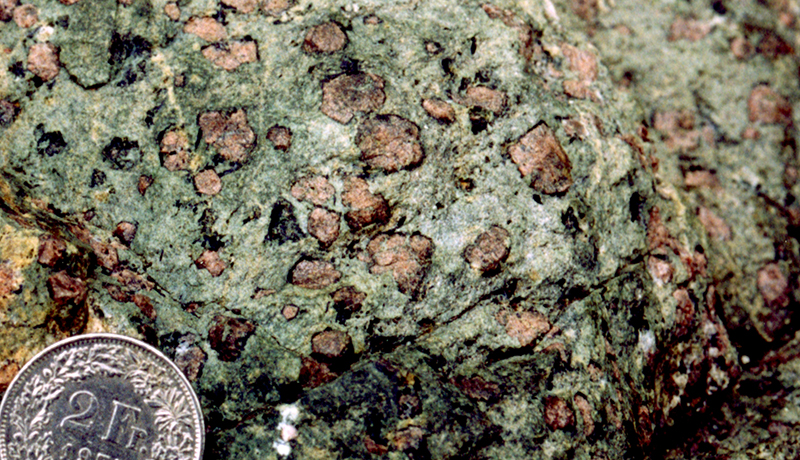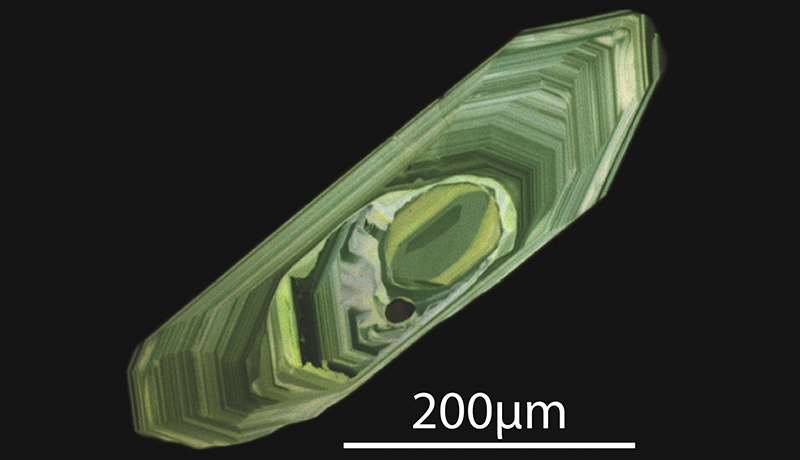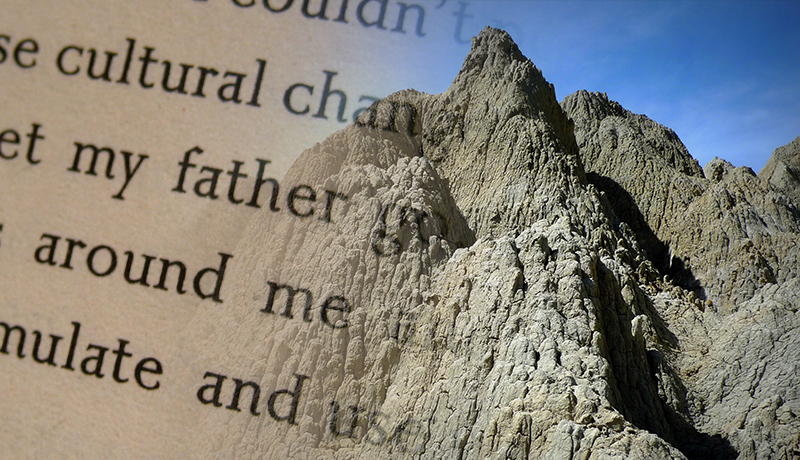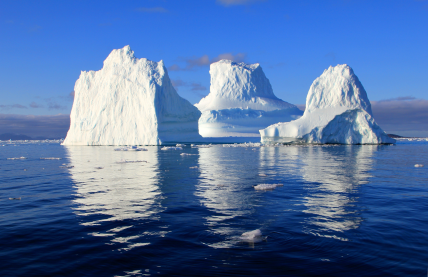Geology is the scientific study of the solid parts of our Earth and the rocks of which it is composed. Like any other science, geology has its own technical language to describe various phenomena. But language is much more than just the words that are used. It is about how the words interact with each other and come together to tell stories. And that is precisely what rocks do; they tell us stories about the history of our earth. To reveal these stories, we have to be able to understand the languages of rocks. So, how do you read a rock?
We can split language up into various building blocks. The smallest building blocks in language are letters. In geology, this means the chemical elements. Rocks contain a variety of elements; common ones such as calcium, magnesium and iron, referred to as major elements, to more exotic elements like neodymium, hafnium, zirconium that are only found in small amounts in rocks and so are referred to as trace elements.
 The technology our modern society relies on is full of metals such as gold, platinum, nickel and tantalum that occur in trace amounts in rocks
The technology our modern society relies on is full of metals such as gold, platinum, nickel and tantalum that occur in trace amounts in rocks
In language, if we put letters together, we form words. In geology, if we put elements together, we form minerals. A mineral is a naturally occurring inorganic substance having an orderly internal structure and characteristic chemical composition, crystal form, and physical properties.
A few minerals occur as single elements, like nuggets of gold, crystals of diamond (composed of carbon), and sulphur found in volcanoes. Most minerals though, are compounds, i.e. different combinations of different elements, just like words are various combinations of different letters. The mineral quartz (SiO2) is quite a simple word, just made up of the elements silicon (Si) and oxygen (O).
The mineral garnet is much more complicated and can have different spellings. The basic formula for garnet is Metal3Al2(SiO4)3, where the metal can be manganese (Mn), iron (Fe), magnesium (Mg) or calcium (Ca). The spelling can get even more complicated as a garnet crystal could contain two of these metals, i.e. both iron and magnesium. But these more complicated spellings can be very helpful to geologists as they tell us information about how the mineral was formed. For example, garnet that is rich in magnesium (also known as pyrope) generally means the garnet formed under high-pressure conditions.
 The red mineral in this eclogite rock is garnet. These garnets have a high magnesium content, meaning they formed deep in the earth's crust at high pressures
The red mineral in this eclogite rock is garnet. These garnets have a high magnesium content, meaning they formed deep in the earth's crust at high pressures
Words combine to form sentences and paragraphs in the way that minerals combine to form rocks. How words join together to form sentences is important in language, as is how minerals fit together to form rocks. Geologists refer to the way that minerals fit together as the texture of a rock. The size and shape of the minerals within a rock is also important. All of this textural information tells us how the rock was formed, as well as the type of environment and conditions it was experiencing when it formed. And often we can see this textural information by just looking at a fist-sized sample of a rock with a hand lens.
Take these two different sedimentary rocks for example. Sedimentary rocks form through the deposition of sediment, eroded material that has been transported by water or wind. Based on simple observations we can interpret how the rock was formed.
|
Sandstone |
Conglomerate |
||
|---|---|---|---|
| Observation | Interpretation | Observation | Interpretation |
| Mainly quartz grains. | Source material was rich in quartz. | Made of pebbles of lots of different rock types. | Source material included all these rock types. |
| Small, rounded grains (mm sized). | Sediment has been transported very far, allowing the sediment to be bumped, broken and made smaller and rounder during transportation. | Grains are somewhat rounded. | Sediment has been transported a little to allow some rounding of grains. |
| All the grains are the same size. | A ‘well sorted’ texture like this indicates that the energy of what they are being transported in is pretty constant. | Grains vary between being 1mm and 10cm in size. | A ‘poorly sorted’ texture indicates the energy of what they are being transported in varies in time and space – sometimes it can move big heavy grains, other times only smaller grains. |
| Environment of deposition. | Sandy beach material that has been transported a long way from its sediment source material. | Environment of deposition. | Pebbly beach where there can be extreme storm events, forming close by to the source of the sediment. |
So, letters combine to make words that combine to make sentences, as elements combine to form minerals to make rocks. To move to the next level of language and story-telling into chapters, we have to look at geological features on a tiny scale. To read the chapters in a rock, we look at features within minerals called zones.
When special minerals such as zircon and monazite grow, they continuously record what is happening to the rock. These minerals typically form in granite rocks, rocks that form from the melting of other rocks. A zircon grain in a granite probably started life in another rock, its source rock. The information about the source rocks will be stored in the centre of a zircon crystal, in the form of its chemical characteristics. The zircon will find itself in the now molten rock and will continue to grow outwards, like how tree-rings grow over time. The melt will change its chemical characteristics through time, and therefore so will the zircon crystal, growing continuous concentric ‘zones’ of progressively different chemistry, until the molten rock has cooled enough and has solidified. Each of these zones, therefore, preserves a chapter in the life of the rock.
 This zircon grain is smaller than a grain of sand. This cathodoluminescence image reveals different coloured zones within the zircon, which shows how the chemistry of the zircon is different across the grain
This zircon grain is smaller than a grain of sand. This cathodoluminescence image reveals different coloured zones within the zircon, which shows how the chemistry of the zircon is different across the grain
The size of these zones, however, is much smaller than all the other observations mentioned so far. You can typically look at textures in a rock using a hand lens, but zircon and monazite crystals are around 100µm (microns) in size, i.e. one-tenth of a millimetre. And one crystal might contain several zones, meaning each zone might only be 10µm (one-hundredth of a millimetre) thick. Geologists look at these tiny features using instruments such as Electron Microprobes (EMP) and use techniques such as Laser Ablation Inductively Coupled Plasma Mass Spectrometry (LA-ICP-MS). The EMP allows geologists to shoot a precise beam of electrons at our tiny minerals, causing them to emit characteristic x-rays based on their chemical composition, which we can then measure. The LA-ICP-MS fires a laser at the sample, sending the debris of the mineral into a plasma, from which individual ions are separated using a magnet and are then measured by a mass spectrometer. These techniques allow geologists to investigate the chemical characteristics of these individual zones, and to read the chapters in the life of the rock.

Learning how to read rocks is a fundamental skill for geologists and is required in order to begin to unravel the secrets of our earth. But it is often based on careful and straightforward observations, which is what makes it such a powerful tool. There are lots of different genres to read too. By reading a sedimentary rock, you might learn about vast oceans that have since dried up. Metamorphic rocks can tell you the biography of entire mountain ranges. Reading an igneous rock may reveal the secrets of the bowels of a volcano.
When you look at enough minerals in enough rocks, you read the letters and the words, the sentences, paragraphs and chapters recorded within them; you can piece together a story and tell the biography of our entire planet.




Rate and Review
Rate this article
Review this article
Log into OpenLearn to leave reviews and join in the conversation.
Article reviews
Dear Valerie,
Thank you for your comment. I would suggest trying the following activity, as you will able learn more about how to identify rocks https://www.open.edu/openlearn/science-maths-technology/science/geology/geology-toolkit
Kindest regards,
OpenLearn team